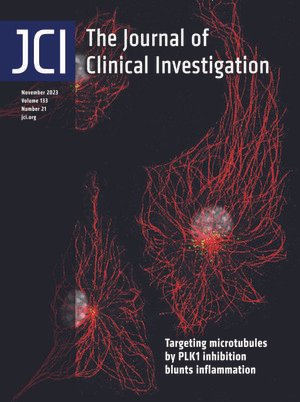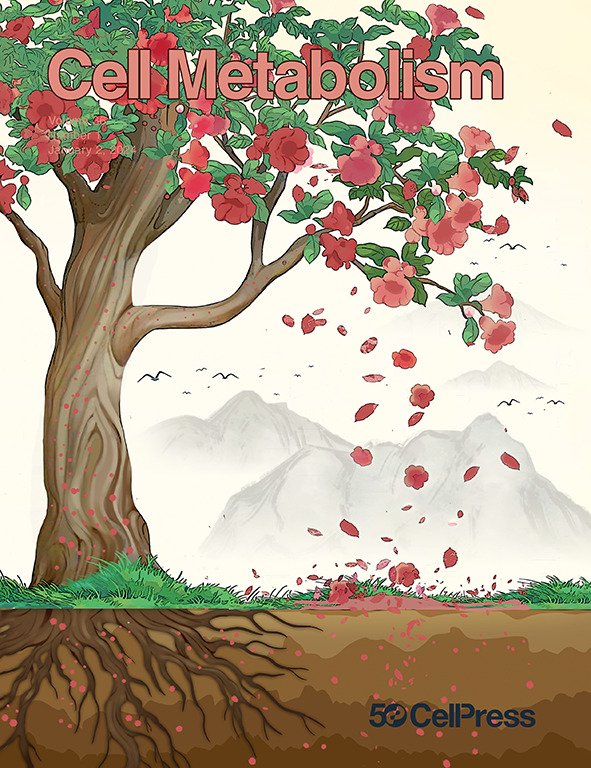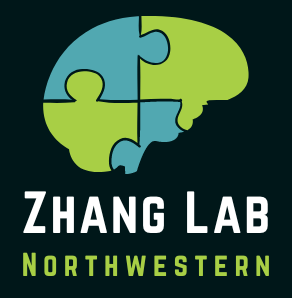-

Proc Natl Acad Sci USA 2019; 116 (47)
Proc Natl Acad Sci USA 2021; 119 (1)
-

Nat Commun 2023; 14, 1610
Nat Commun 2023; 14, 1566
-

Nat Immunol 2022 ;23 (5)
-

Biomaterials 2015; 67
Biomaterials 2014; 35 (25)
-

J Clin Invest 2023; 133 (21)
J Clin Invest 2023; 133 (24)
-

Cell Metab 2024;36 (1)
-

Sci Adv 2021; 7 (8)
-

J Exp Med 2021; 218 (1)
-

Sci Transl Med 2020; 12 (558)
-

Cell Rep 2019; 27 (1)
SELECTED PUBLICATIONS
Chao et. al. Integrating antigen capturing nanoparticles and type 1 conventional dendritic cell therapy for in situ cancer immunization. Nature Communications. 2025
Billingham et. al. Microglial fuctose metabolism is essential for glioblastoma growth. Billingham et. al. bioRxiv. 2025
Hou et. al. Dual αVβ8 integrin and PD-1 blockade overcomes TGFβ-mediated B-cell suppression to enhance anti-glioma immunity. Neuro-Oncology. 2025
Du et. al. Is modulation of immune checkpoints on glioblastoma-infiltrating myeloid cells a viable therapeutic strategy? Neuro-Oncology. 2024
Wang et. al. B cell-based therapy produces antibodies that inhibit glioblastoma growth. Journal of Clinical Investigation. 2024
Katz et. al. A covalent creatine kinase inhibitor ablates glioblastoma migration and sensitizes tumors to oxidative stress. Scientific Reports. 2024
Kim et. al. Fc-enhanced anti-CTLA-4, anti-PD-1, doxorubicin, and ultrasound-mediated BBB opening: A novel combinatorial immunotherapy regimen for gliomas. Neuro-Oncology. 2024
Du et. al. Glioblastoma phagocytic cell death: balancing the opportunities for therapeutic manipulation. Cells. 2024
Rashidi et. al. Myeloid cell-derived creatine in the hypoxic niche promotes glioblastoma growth. Cell Metabolism. 2024
Chia et. al. The CXCL16-CXCR6 axis in glioblastoma modulates T-cell activity in a spatiotemporal context. Frontiers in Immunology. 2024
Hou et. al. Antigen-presenting B cells promote TCF-1+ PD1-stem-like CD8+ T-cell proliferation in glioblastoma. Frontiers in Immunology. 2023
Zhang et. al. GLUT3 regulates alternative macrophage signaling through a glucose transport–independent role. Journal of Clinical Investigation. 2023
Fares et. al. Metixene is an incomplete autophagy inducer in preclinical models of metastatic cancer and brain metastases. Journal of Clinical Investigation. 2023
Zhang et. al. STING agonist-loaded, CD47/PD-L1-targeting nanoparticles potentiate antitumor immunity and radiotherapy for glioblastoma. Nature Communications. 2023
Dmello et. al. Checkpoint kinase 1/2 inhibition potentiates anti-tumoral immune response and sensitizes gliomas to immune checkpoint blockade. Nature Communications. 2023
Petrosyan et. al. Endoplasmic reticulum stress in the brain tumor immune microenvironment. Molecular Cancer Research. 2023
Billingham et. al. Mitochondrial electron transport chain is necessary for NLRP3 inflammasome activation. Nature Immunology. 2022
Ellingwood et. al. Therapeutic nanoparticles harness myeloid cells for brain tumor-targeted delivery and immunomodulation. Material Matters. 2022
Sasaki et. al. Intranasal delivery of nanoliposomal SN-38 for treatment of diffuse midline glioma. J Neurosurg. 2022
Larkin et. al. Myeloid cell classification and therapeutic opportunities within the glioblastoma tumor microenvironment in the single cell-omics era. Frontiers in Immunology. 2022
Tripathi et. al. cGAS-STING pathway targeted therapies and their applications in the treatment of high-grade glioma. F1000Research. 2022
Miska et. al. Polyamines drive myeloid cell survival by buffering intracellular pH to promote immunosuppression in glioblastoma. Science Advances. 2021
Cordero et. al. Combination of tucatinib and neural stem cells secreting anti-HER2 antibody prolongs survival of mice with metastatic brain cancer. PNAS. 2021
Lee-Chang et. al. Activation of 4-1BBL+ B cells with CD40 agonism and IFNgamma elicit potent immunity against glioblastoma. Journal of Experimental Medicine. 2020.
Kanojia et. al. BET inhibition increases βIII-tubulin expression and sensitizes metastatic breast cancer in the brain to vinorelbine. Science Translational Medicine. 2020
Bartolomé et. al. Protein tyrosine phosphatase-1B inhibition disrupts IL13Rα2-promoted invasion and metastasis in cancer cells. Cancers. 2020
Rashidi et. al. GCN2 is essential for CD8+ T cell survival and function in murine models of malignant glioma. Cancer Immunology, Immunotherapy. 2020
Zhang et. al. Therapeutic targeting of tumor-associated myeloid cells synergizes with radiation therapy for glioblastoma. PNAS. 2019
Lee-Chang et. al. Myeloid-derived suppressive cells promote B cell-mediated immunosuppression via transfer of PD-L1 in glioblastoma. Cancer Immunology Research. 2019.
Miska et. al. HIF-1α Is a Metabolic Switch between Glycolytic-Driven Migration and Oxidative Phosphorylation-Driven Immunosuppression of Tregs in Glioblastoma. Cell Reports. 2019.
Wu et. al. Repolarization of myeloid derived suppressor cells via magnetic nanoparticles to promote radiotherapy for glioma treatment. Nanomedicine: Nanotechnology, Biology and Medicine. 2019.
Wu et. al. Race influences survival in glioblastoma patients with KPS ≥ 80 and associates with genetic markers of retinoic acid metabolism. Journal of Neuro-Oncology. 2019
Panek et. al. Local Application of Autologous Platelet-Rich Fibrin Patch (PRF-P) Suppresses Regulatory T Cell Recruitment in a Murine Glioma Model. Molecular neurobiology. 2018
Kaverina et. al. Tamoxifen overrides autophagy inhibition in Beclin-1-deficient glioma cells and their resistance to adenovirus-mediated oncolysis via upregulation of PUMA and BAX. Oncogene. 2018
Feng et. al. Self-Assembly of Gold Nanoparticles Shows Microenvironment-Mediated Dynamic Switching and Enhanced Brain Tumor Targeting. Theranostics. 2017
Muroski et. al. Fatty Acid Uptake in T Cell Subsets Using a Quantum Dot Fatty Acid Conjugate. Scientific Reports. 2017
Zhang et. al. Dual-function nanocarriers with interfacial drug-interactive motifs for improved delivery of chemotherapeutic agents. Nanobiomaterials in Cancer Therapy: Applications of Nanobiomaterials. 2016
Gao et. al. Functional surfactants: designing principles and applications in constructing nanomedicines. Nanomedicine: Nanotechnology Biology and Medicine. 2016
Zhang et. al. Effective co-delivery of doxorubicin and dasatinib using a PEG-Fmoc nanocarrier for combination cancer chemotherapy. Biomaterials. 2015
Zhang et. al. Tunable pH-Responsive Polymeric Micelle for Cancer Treatment. ACS Macro Letters. 2015
Zhang et. al. PEGylated Fmoc-amino acid conjugates as effective nanocarriers for improved drug delivery. Molecular Pharmaceutics. 2015
Zhang et. al. Fmoc-conjugated PEG-vitamin E2 micelles for tumor-targeted delivery of paclitaxel: enhanced drug-carrier interaction and loading capacity. The AAPS Journal. 2014
Zhang et. al. Targeted Delivery of Anticancer Agents via a Dual Function Nanocarrier with an Interfacial Drug-Interactive Motif. Biomacromolecules. 2014
Zhang et. al. PEG-Farnesyl Thiosalicylic Acid Telodendrimer Micelles as An Improved Formulation for Targeted Delivery of Paclitaxel. Molecular Pharmaceutics. 2014
Zhang et. al. A PEG-Fmoc conjugate as a nanocarrier for paclitaxel. Biomaterials. 2014
Zhang et. al.Design and evaluation of a PEGylated lipopeptide equipped with drug-interactive motifs as an improved drug carrier. The AAPS Journal. 2014
Zhang et. al. Characterization of Spherulites as a Lipidic Carrier for Low and High Molecular Weight Agents. Pharmaceutical Research. 2013
Li et. al. RNAi in Liver Diseases in Advanced Delivery and Therapeutic Applications of RNAi. 2013
Zhang et. al. Incorporation of a selective sigma-2 receptor ligand enhances uptake of liposomes by multiple cancer cells. International Journal of Nanomedicine. 2012
Ding et. al. PEG prodrug of gambogic acid: Amino acid and dipeptide spacer effects. Polymer. 2012
Min et. al. Novel furoxan NO-donor pemetrexed derivatives: design, synthesis, and preliminary biological evaluation. Medicinal Chemistry Research. 2009
Min et. al. Water‐soluble poly(ethylene glycol) prodrug of pemetrexed: Synthesis, characterization, and preliminary cytotoxicity. Journal of Applied Polymer Science. 2009
Tang et. al. Water-soluble gambogic acid PEGylated prodrugs: synthesis, characterization, physicochemical properties and in vitro hydrolysis. Pharmazie. 2008.
Zhang et. al. Water soluble poly(ethylene glycol) prodrug of silybin: Design, synthesis, and characterization. Journal of Applied Polymer Science. 2008
